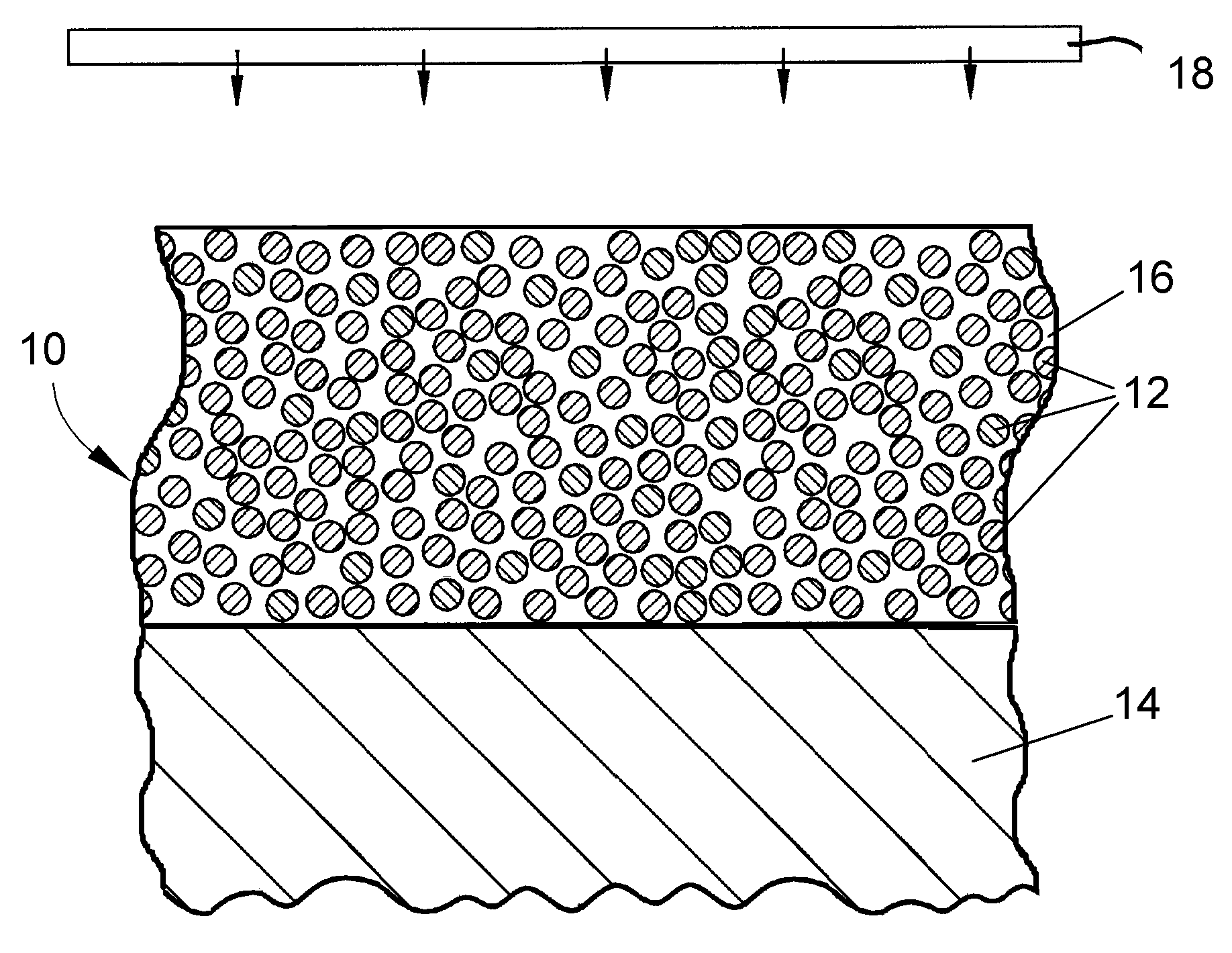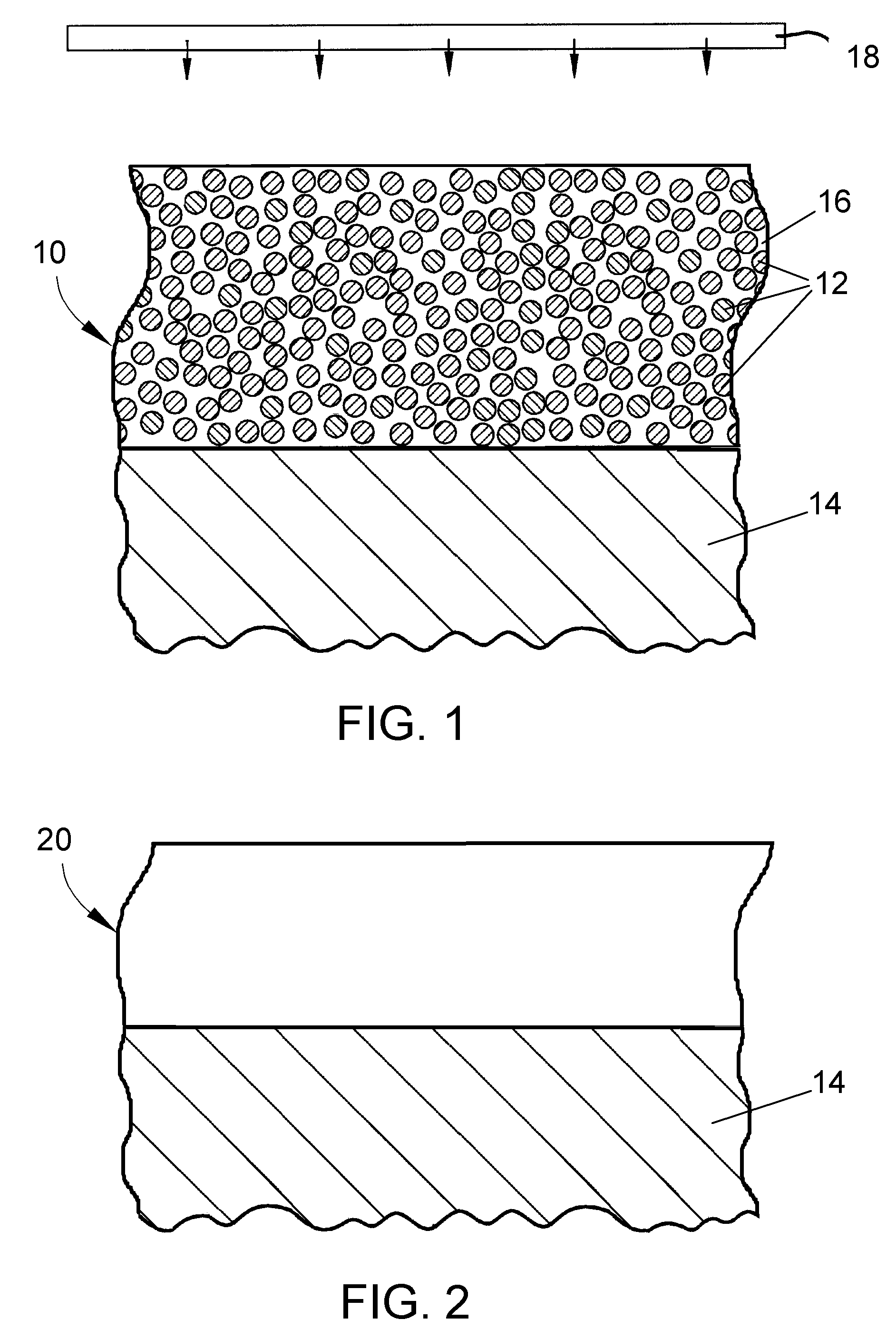Microwave brazing process for forming coatings
a microwave brazing and coating technology, applied in solid-state diffusion coating, nuclear engineering, machines/engines, etc., can solve the problems of complex coating process, increased operation cost and time, and component heat sensitivity, so as to achieve the effect of not significantly degrading the properties of the substra
- Summary
- Abstract
- Description
- Claims
- Application Information
AI Technical Summary
Benefits of technology
Problems solved by technology
Method used
Image
Examples
Embodiment Construction
[0012]The invention will be described with specific reference to processing of high temperature components of gas turbine engines, and particularly to coating or building up surfaces of such components. However, the invention has application to a variety of components and materials other than those discussed, and such variations are within the scope of this invention.
[0013]FIG. 1 schematically represents a brazing paste 10 applied to a surface of a substrate 14. As a paste, the brazing paste 10 is necessarily pliable and readily capable of being spread over the surface of the substrate 14 with minimal force. The brazing paste 10 is represented as containing powder particles 12 dispersed in a binder matrix 16 that, according to known brazing practices with brazing tapes, burns off at temperatures below that required to melt the particles 12. The substrate 14 represents a surface region of a component to be protected, repaired, and / or built-up by a coating 20 formed from the brazing p...
PUM
| Property | Measurement | Unit |
|---|---|---|
| particle size | aaaaa | aaaaa |
| temperatures | aaaaa | aaaaa |
| volume ratio | aaaaa | aaaaa |
Abstract
Description
Claims
Application Information
 Login to View More
Login to View More - R&D
- Intellectual Property
- Life Sciences
- Materials
- Tech Scout
- Unparalleled Data Quality
- Higher Quality Content
- 60% Fewer Hallucinations
Browse by: Latest US Patents, China's latest patents, Technical Efficacy Thesaurus, Application Domain, Technology Topic, Popular Technical Reports.
© 2025 PatSnap. All rights reserved.Legal|Privacy policy|Modern Slavery Act Transparency Statement|Sitemap|About US| Contact US: help@patsnap.com


